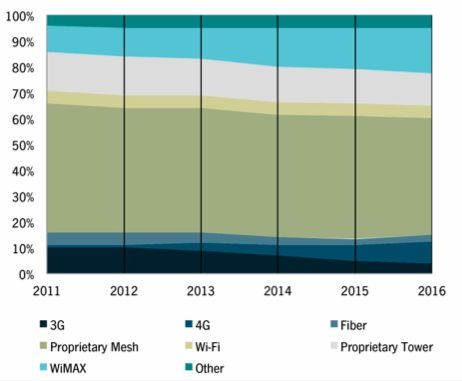Below is an excerpt from GTM Research's recent smart grid report, Distribution Automation Communication Networks: Strategies and Market Outlook, 2012-2016. To learn more about GTM Research's take on the distribution automation market, register for a free webinar on the topic by clicking here.
Until very recently, virtually all distribution grid systems were either manually controlled or controlled using modeling or estimation. Utilities operated on the basis of an estimation of the state of their grid: very few utilities had real, empirical evidence as to what was actually occurring in their systems and what information they did have was after the fact.
“Smart grid,” “digital grid,” and “intelligent grid” are among many terms used to describe the transformation of these electricity transmission and delivery systems from a one-way collection of paths for electricity to a delivery system controlled, managed and operated as an intelligent, integrated information network. These networks look very much like their counterparts in the information technology world and less like a collection of pipes, pumps and filters.
The promise of this transformation is to create a network that is self-healing; is controlled based on actual events and circumstances; that maximizes efficiency in the transmission and delivery of electricity; and that extends the operating lifetime of equipment, lowers the overall cost of operations and avoids new capital investment in infrastructure and generating stations. This promise also provides the end-user with a far greater number of options in electricity costs and usage.
There are a number of choices facing utilities with regard to the technologies available that meet their distribution automation (DA) and intelligent grid management equipment requirements. In order for GTM Research to develop a DA communications forecast, cost ranges were used for each communications technology. The figure below displays the market share forecast developed by GTM Research at the average cost of technology per node (any device that must be connected to the system, whether on a point-to-point basis or as part of a mesh, including intelligent electronic devices at the one end and the various routers and gateways at the other end).
FIGURE: Communications Technology Deployment Assumptions
Source: Distribution Automation Communication Networks: Strategies and Market Outlook, 2012-2016
GTM Research believes that DA represents the greatest opportunity to reap the benefits of the smart grid, but at the current juncture it remains largely undeveloped. Automation of distribution system operations and systems, substations and transmission grids offers more rapid and far greater return on investments than smart meter programs by eliminating existing inefficiencies in the system, thereby avoiding traditional capital investments in generation and infrastructure, and by reducing the overall cost of operation by conserving energy and lowering O&M expenses.




